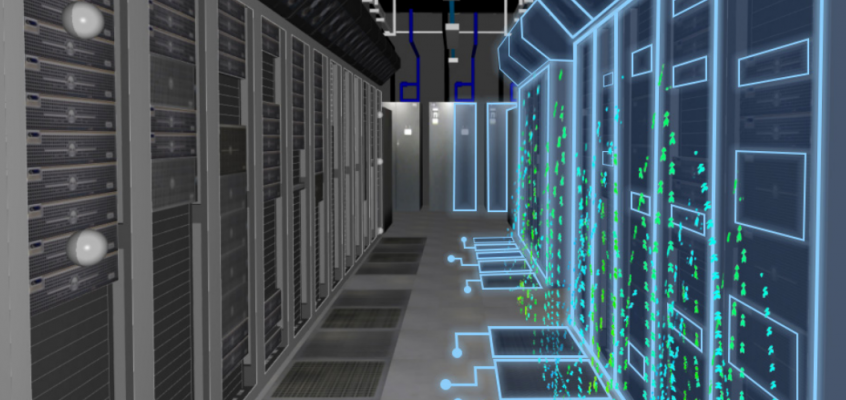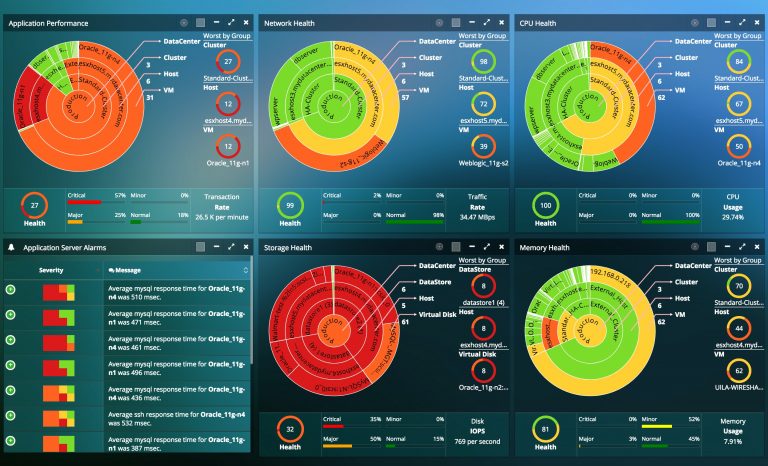Digital Twin Technology in Data Centers: A Technical Deep Dive

Digital twins are no longer a theoretical concept or a luxury reserved for aerospace or automotive industries—they are now reshaping how we design, manage, and optimize mission-critical environments like data centers. As data centers scale to support AI workloads, edge computing, and real-time services, operational visibility and predictive capabilities become essential. Digital twins fill this gap by creating real-time, data-driven virtual replicas of physical systems.
What is a Digital Twin?
A digital twin is a virtual model of a physical environment, constantly updated with live sensor data and operational metrics. In data centers, this includes:
Rack-level temperatures, humidity, and airflow
Power usage effectiveness (PUE), UPS and battery health
Real-time energy consumption and thermal loads
IT asset performance, including CPU/GPU utilization and failure patterns
Physical infrastructure modeling (rack elevations, cable paths, airflow obstructions)
These digital replicas use real-time IoT sensor feeds, historical data, and simulation engines to predict, visualize, and optimize the performance of the physical facility.
How Digital Twins Enhance Data Center Operations
1. Predictive Maintenance and Anomaly Detection
By integrating sensor telemetry from PDUs, temperature and humidity probes, HVAC systems, and server health logs, digital twins allow operators to predict component degradation before it causes failure.
For example, Microsoft’s Project Tardigrade uses digital twin models to detect early warning signs of fan degradation in Azure data centers, allowing for proactive replacement and reducing unplanned downtime.
🛠 Technical Note: Predictive maintenance models are trained using ML algorithms like Random Forest and LSTM (Long Short-Term Memory) networks on sensor datasets, creating alerts when operating conditions deviate from the predicted behavior envelope.

Thermal Mapping and CFD Integration
Thermal digital twins simulate airflow dynamics using real-time temperature readings from rack sensors (such as AKCP’s Cabinet Thermal Map Sensor) and integrate with Computational Fluid Dynamics (CFD) models to:
Optimize CRAC/CRAH setpoints
Identify hot spots and under-cooled zones
Validate containment strategies (e.g., cold aisle vs. hot aisle)
Simulate failure scenarios such as fan shutdown or power outages
Example: AKCP’s AKCessPro Server uses digital twin technology with live CFD feedback to model cooling and airflow changes.
3. Capacity Planning and Resource Optimization
With a digital twin, planners can simulate the impact of:
Adding a 10kW GPU node in Rack A3
Redistributing 1U servers to balance thermal load
Expanding power draw across multiple PDUs
This reduces human error and ensures compliance with design thresholds before physically deploying equipment.
Case Study: NTT Communications deployed a digital twin across its data centers in Tokyo to forecast power and cooling requirements. They achieved a 30% improvement in rack utilization and deferred infrastructure expansion by 18 months.
4. Disaster Recovery and Scenario Simulation
Digital twins are increasingly used to model what-if scenarios:
What happens if a CRAC unit fails in Zone B?
How does a 2-minute utility power outage affect UPS load transfer?
Can we tolerate a failed water-cooled chiller during summer?
These simulations, backed by live telemetry and historical incident logs, provide confidence for disaster recovery planning, SLAs, and risk assessments.
5. Sustainability and ESG Reporting
Digital twins allow operators to track carbon emissions and energy efficiency in granular detail. This is critical for:
Meeting corporate ESG goals
Auditing energy consumption for ISO 50001
Reporting renewable energy usage to regulators
Example: Equinix’s Climate Neutral Data Center Roadmap incorporates digital twins to track water usage effectiveness (WUE) and energy reuse factor (ERF) across 200+ data centers globally.
Core Technologies Behind Data Center Digital Twins
| Technology | Role |
|---|---|
| IoT Sensors | Gather live data (temperature, humidity, power, airflow) |
| DCIM Platforms | Data aggregation and infrastructure management (e.g., AKCPro Server, Sunbird DCIM) |
| 3D Modeling and CFD | Airflow and thermal simulation |
| AI/ML Algorithms | Pattern recognition and predictive analytics |
| Edge Computing | Enables real-time feedback loops with low latency |
| Cloud Integration | Enables remote access and centralized analytics across multiple facilities |
Challenges and Considerations
While digital twins offer tremendous benefits, implementing them requires:
High-quality sensor data: Sensor accuracy and calibration are critical.
Data integration: Linking BMS, DCIM, and ITSM platforms can be complex.
Real-time data processing: A scalable data pipeline architecture is essential.
Security: Live telemetry data must be protected to avoid exploitation.
Despite these hurdles, the ROI—through reduced downtime, energy savings, and improved operational agility—is substantial.
Conclusion
Digital twin technology is not just a monitoring tool—it is a foundational layer for next-generation data center operations. By leveraging live telemetry, intelligent analytics, and simulation, digital twins enable data center managers to move from reactive firefighting to proactive optimization. As workloads evolve and environmental regulations tighten, digital twins will play an increasingly central role in designing, operating, and sustaining intelligent data center infrastructure.
